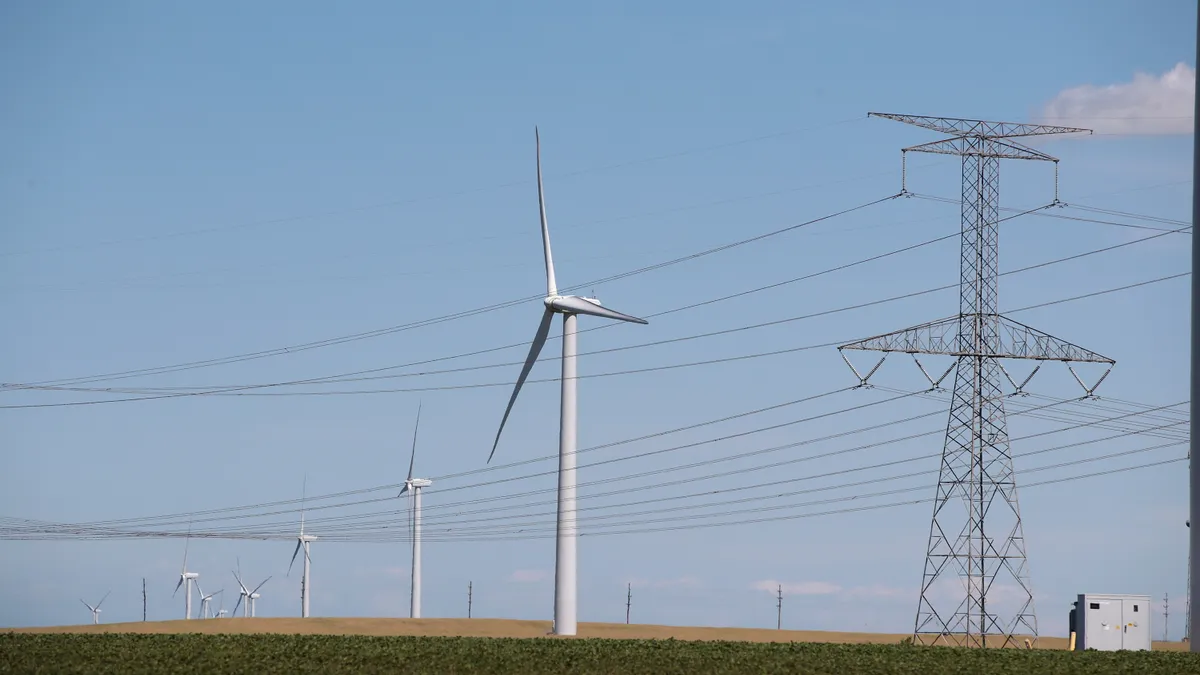The following is a contributed article by Stefan Koester, senior policy analyst at the Information Technology & Innovation Foundation.
The linchpin of President Biden's strategy to achieve a net-zero electricity grid by 2035 is a national Clean Electricity Performance Program, or CEPP, which encourages utilities to produce an increasing amount of power from low-carbon resources. The idea, included in Congressional Democrats' budget reconciliation outlines in the House and Senate, is similar to previous clean energy standard (CES) proposals but is designed in such a way as to pass through the simple majority reconciliation process in the Senate.
The CEPP has broad support among corporate leaders, environmental groups and even the Edison Electric Institute, the trade organization for the nation's investor-owned utilities, which came out in support of a similar previous CES proposal. On September 10, we got the first look at the House's version of the CEPP, which includes a $150 per MWh payment for utilities that increase their annual clean electricity by 4% year-over-year above 1.5% of the previous year's target. The CEPP also includes a $40 per MWh penalty for utilities that miss their annual target.
A CEPP has a lot going for it. It works by providing utilities with payments for meeting annual low-carbon electricity targets and penalties for utilities that do not, all with the goal of achieving a national average of 80% clean electricity by 2031. It reduces climate-damaging emissions without putting a big dent in consumers' wallets. And by working through the tax code, it is more progressive than a purely regulatory approach. But there's a big hole that needs to be fixed. For the nation to achieve its net-zero ambitions, a CEPP must provide increased incentives and funding to spur clean energy innovation — not just to deploy well-established technologies, because these won't be enough to get the job done.
While the legislative text of the CEPP is being worked out in the House and will likely be altered during the reconciliation negotiation process, the program specifics are clear. Every utility in the United States would be encouraged to supply an increasing amount of electricity each year, through a system of performance payments, from qualified low-carbon resources such as nuclear, hydropower, wind, solar and geothermal.
Notably, the legislation sets the carbon intensity target for clean electricity at 0.10 metric tons of CO2e per MWh, likely too low for fossil fuel with CCS to count. While utilities that don't meet the annual clean energy target would pay a penalty of $40 per MWh, every utility would start from where they currently are and would not need to meet the same overall level of clean electricity deployment. The goal is to have the national average be 80% clean electricity by 2031, not to penalize specific utilities that rely more heavily on fossil fuels.
Congressional Democrats crafting a national CEPP can look to the success of state renewable portfolio standards (RPSs), which have driven rapid growth in renewable energy deployment and helped to reduce electric-sector emissions. While a CEPP is structured differently than state-level RPSs, the principle is the same, with utilities meeting an annual standard through a system of credits and payments.
But early RPSs had a major flaw: They only rewarded well-established technologies, particularly wind, while punishing the less-established solar industry. Many states learned from this experience and fixed this flaw with a solar “carve-out” within their RPSs. Once solar developers could go after this protected market, they grew rapidly, ultimately helping to pull the technology's cost down and dramatically increase deployment. Solar is now not only cheaper than wind in many places — it's cheaper than coal and natural gas, too.
The current legislative text of the CEPP will likely reward well established technologies like wind and solar and will not spur greater energy innovation beyond these well-established technologies. A large body of evidence suggests that still immature technologies such as advanced geothermal, long-duration energy storage, tidal power, and small nuclear plants, are needed to build an affordable, reliable, and low-carbon grid. A CEPP that doesn't incentivize the deployment of these technologies will ultimately stall along the path to net-zero emissions beyond 2030.
The fix is pretty simple: Any CEPP legislation should include an innovation multiplier that would give extra payments to electricity generated with new clean technologies. Senator Tina Smith's (D-Minn.) 2019 Clean Energy Standard Act, for instance, would have given a 25% bonus for very early-stage technologies and a 10% bonus for technologies that have begun to deploy more widely.
The Smith bill is a good start and largely inspired the current CEPP text, but the final legislation should include an innovation multiplier and likely one higher than found in Sen.Smith's early CES legislation. Twenty-five percent isn't enough of a boost to spur innovation given the huge challenges of deploying capital-intensive power technologies and the pressure from incumbent low-cost generators — including renewable resources, which are now well-established and yet remain eligible for federal and state tax credits.
CEPP legislation should include a similar multiplier approach to early-stage energy technology, with increased federal payments for these technologies. Solar energy needed more than 40 years of sustained support to become cost-competitive. 2035 is less than 15 years away. Only a robust innovation multiplier — 50% to 100% —will give new technologies a chance to hit this ambitious target.
As lawmakers consider their options for climate action in a reconciliation package, they must continue to support clean energy innovation. A CEPP with a well-designed innovation multiplier could go a long way toward developing and deploying at scale the technology necessary to decarbonize the U.S. grid.





















